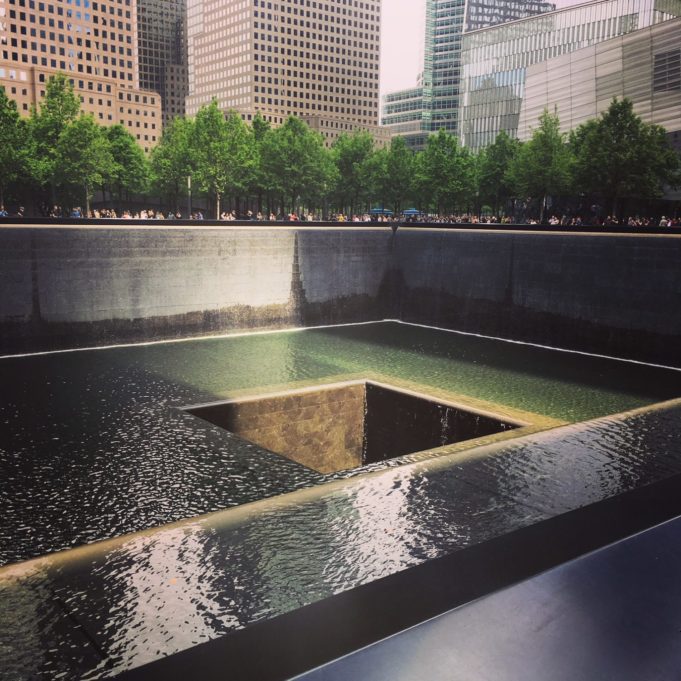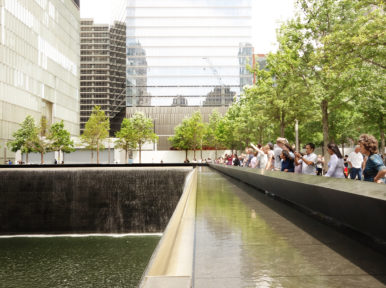Our family was in NYC a few weeks ago and visited the 9/11 memorial and museum. What is immediately striking and powerful is the scale and dramatic void it creates in the City. It’s very moving – to say the least. But what was particularly memorable for me was watching my teenage kids’ reactions as the significance of the place began to sink-in. Visiting the memorial wasn’t at the top of their list. Not even close. They were on a mission to find cool clothes – darting in and out of shops – trying to keep pace with the City. And that’s how they first approached the memorial – moving quickly. Let’s get this over with.
Their pace slowed as they moved around the South tower footprint and started reading names. Until they each found their own place along the rail to stop – and each stood there for a long time. A woman along the rail not far from my daughter seemed to be crying – and I noticed Calla look over at her a few times. I didn’t ask her about it, but I think she was very moved by that.
Eventually we made our way down into the museum. When you stand in the room with the audio recordings of desperate phone calls to loved ones – you’re simply moved to tears. All of us. My kids weren’t born when 9/11 happened, and so that tragic day was known to them only as a historical event – perhaps without any more weight than any other they’ve learned about. But on that day at the memorial, it hit all of us on a visceral, emotional level – and we’ll all remember that.
Whether formal or impromptu, in stone or meant to weather away, memorials are a critical piece of our cultural identity and shared memory. There is no guidebook for their design, only the desire to maintain the integrity of purpose. In most cases, the process is just as important as the end result. As designers, our job is to evoke feelings and recognize the personal nature of each project.
Monuments and memorials act as vehicles for introspection and remembrance. Often, the message is one of resilience and the opportunity for people to leave with a different perspective than they arrived. The visitor experience is brought into the shining spotlight as individuals walk through physical symbols of memory and history. Material selection and the overall character of each space are carefully determined based on the unique story that begs to be told.
As an architectural form, memorial designs emerge at the intersection of art, history and personal interpretations. They are moments in history that take years or even decades to fully realize into a collective expression of grief, wonder, understanding and healing in a way that is meaningful to those inside and outside the actual experience.
The 9/11 Memorial was designed by architects Michael Arad and Peter Walker.



